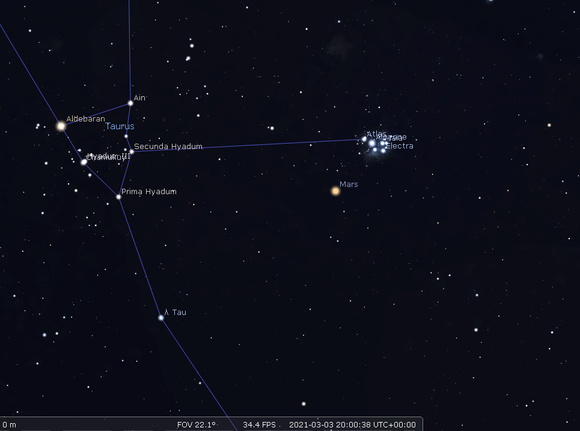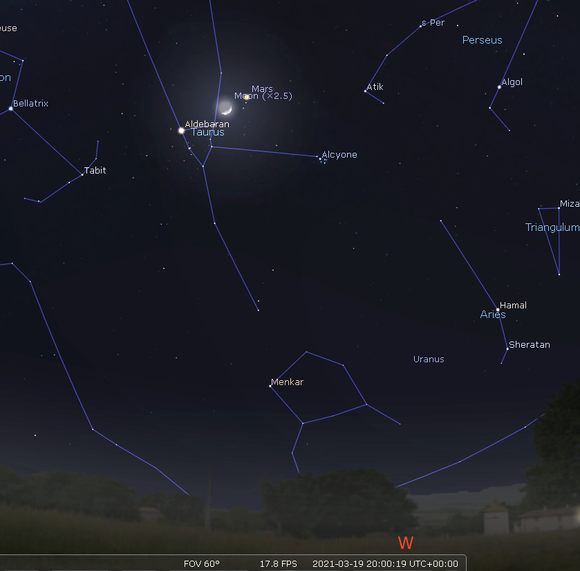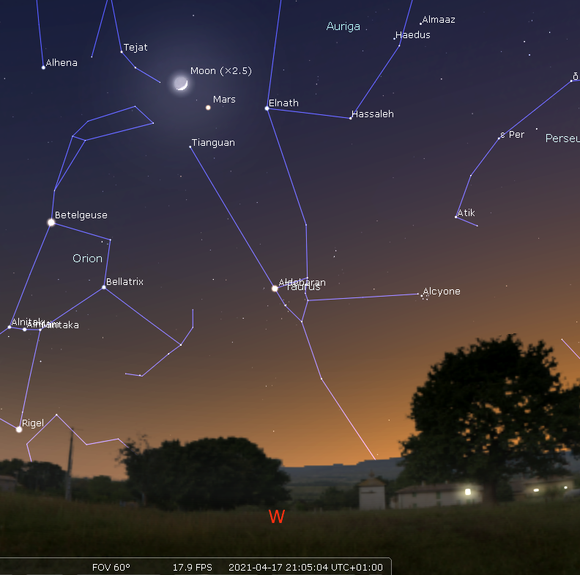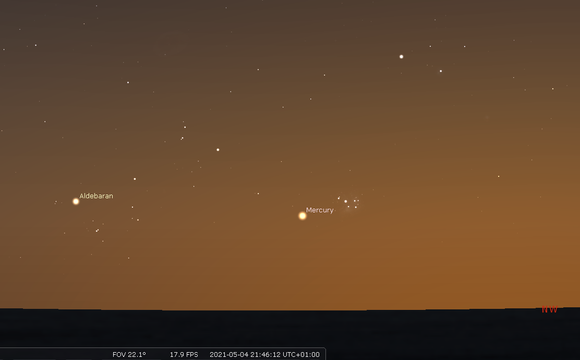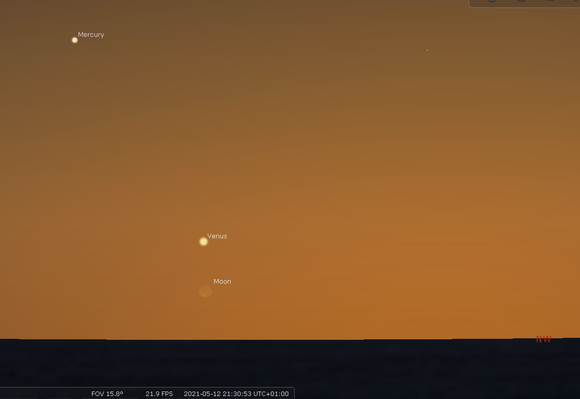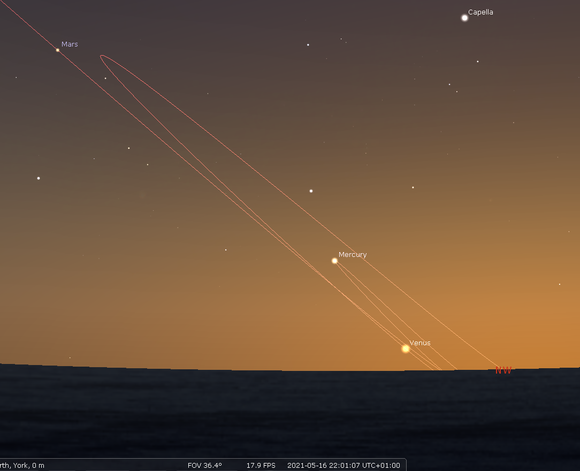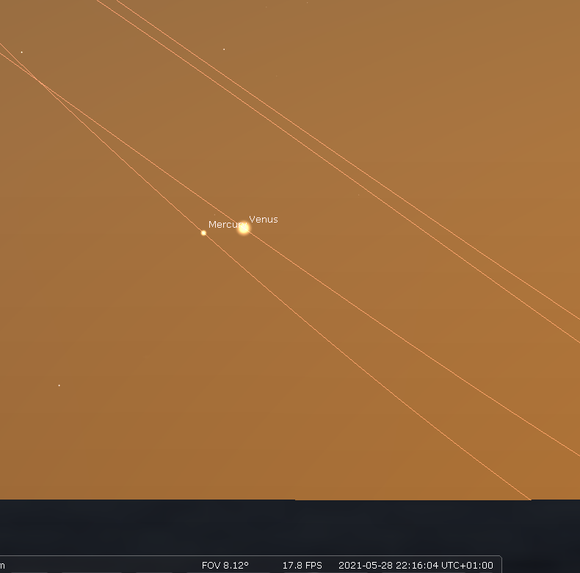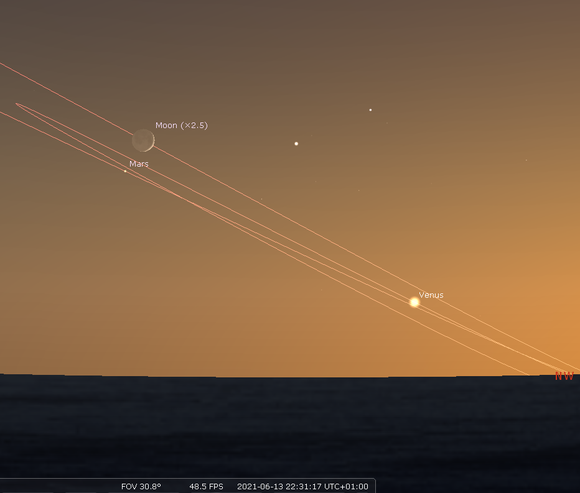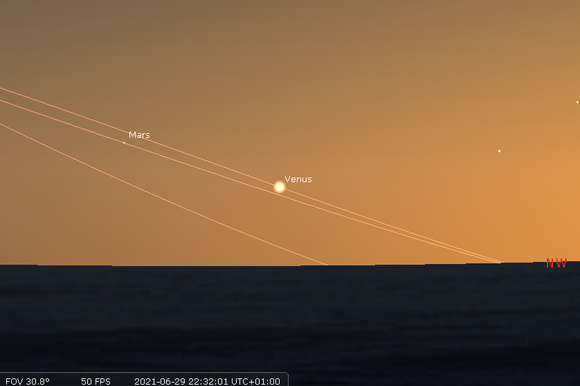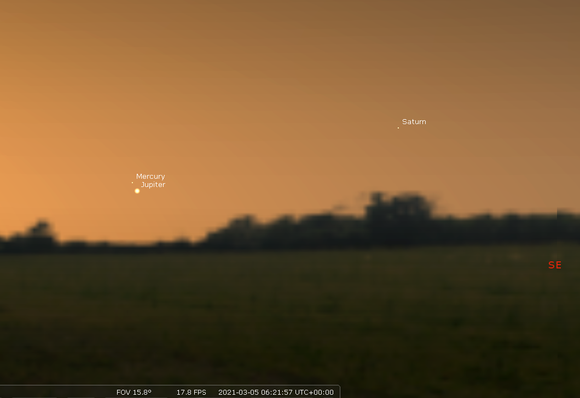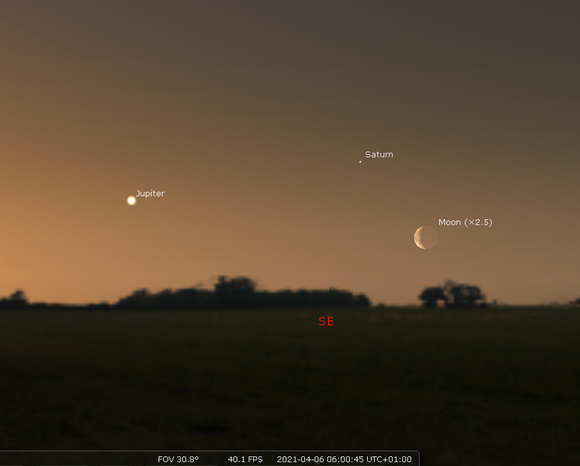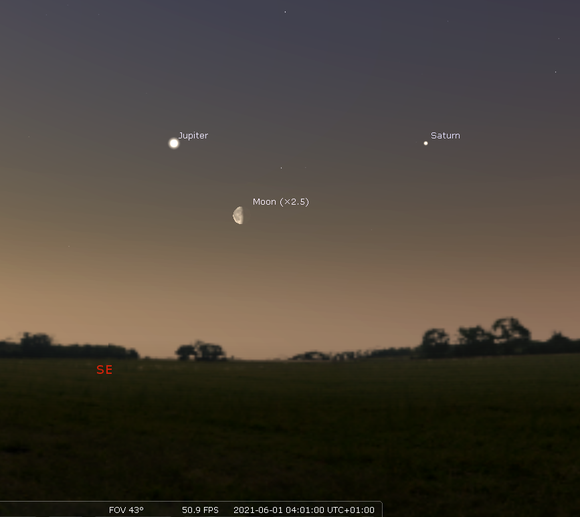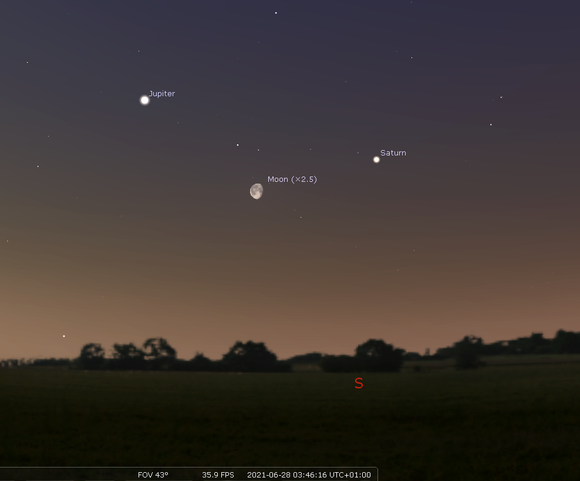We shall concentrate first on the evening sky throughout this period.
Mars remains the sole naked eye planet visible in March, although it is slipping further into the SW and the time spent above the horizon continues to diminish. At the start of March the red planet glides between the open star clusters of the Pleiades and Hyades. The dates to look out for are the 3rd, 4th and 5th, when Mars lies closest to the Pleiades ...
together with the 18th and 19th, when it lies to the right of the Hyades and is also joined by a crescent moon making for a very picturesque scene.
By April Mars is sliding down toward the west, but also moving back along the ecliptic, so its descent seems slowed. View on the 17th when a crescent moon joins Mars in the evening twilight.
May arrives, as do the inferior planets; Mercury and then Venus, joining Mars in the evening twilight sky and ensuring that May will be a busy month. Elusive Mercury is the first to appear low the NW a few days into May. View on the 4th at 21:45hrs when it resides to the left of the Pleiades star cluster just above the NW horizon.
Venus follows several days later but will be very low to the horizon so you will require a flat, unobstructed aspect. On the 12th view at precisely 21:30hrs and you may just glimpse a one day old moon directly below Venus. It will be an interesting observing challenge as you will have just 10 minutes before it sets! Use binoculars to help pick out the moon.
The following evening a two day old moon joins the 'messanger of the gods', view around 22:00hrs.
By the 16th Mercury will be at its greatest altitude above the horizon and should be visible to the naked eye and easily seen in binoculars. View at 22:00hrs. Mars and the moon reside a little higher making for a fine twilight vista.
Mid June 22:00hrs- Venus hugs the NW horizon, Mercury lies above,
(click for image) whilst a little way back ...
As Venus gains a little in altitude, Mercury sinks back toward the horizon, the two meeting on the 28th.
Into June, and Venus remains reluctant to stray too far from the horizon, though it will be conspicuous to the naked eye even in fairly bright twilight. Mars will be less apparent, but is visited by a crescent moon on the 13th.
By the end of June Mars and Venus are closing together above the NW horizon, and are in conjunction in early July, but that's another for another occasion.
Let us now take a peek at the coming's and going's in the dawn sky, starting in March.
It's our elusive friend; Mercury, which once again makes an appearance, this time low in the ESE. However your eye will be initially drawn to the more conspicuous beacon of Jupiter, which on the 5th lies immediately below Mercury. View around 06:30hrs. Saturn will be the fainter 'star' further round to the SE.
Then on the 9th a waning crescent moon may be spotted to the right of Saturn. Observe from 06:10 - 06:20hrs.
Into April and Mercury will have departed once again. The moon will once again visit Saturn and Jupiter on the 6th - 06:00hrs
It does likewise in May as well, visiting on May 4th (Star Wars day). View SE at 05:00hrs
By June both Jupiter and Saturn will be a little higher, though you will have to be up very early to spot them. The moon pays a visit twice this month, the first time on the 1st ...
... and the second time on the 28th. It is up for discussion whether 04:00h is early morning or the middle of the night! We shall take a look at the second half of the year in June.
- Log in to post comments

